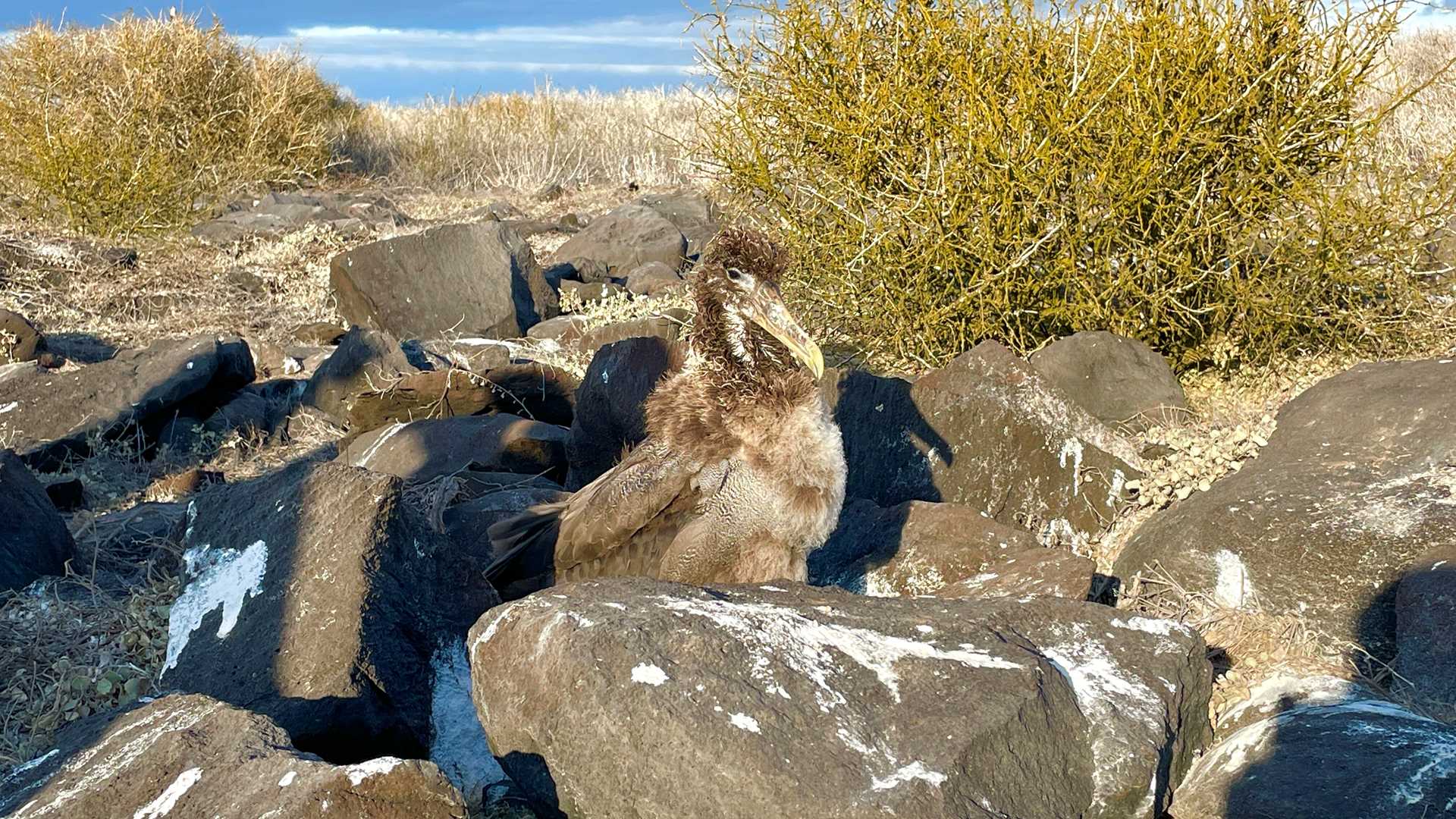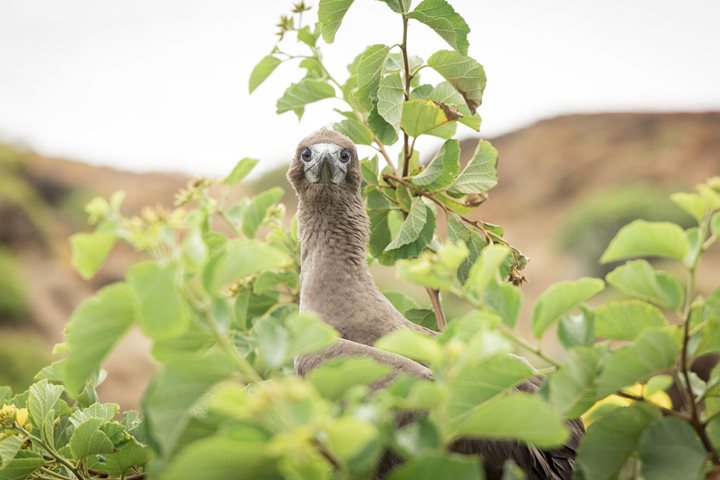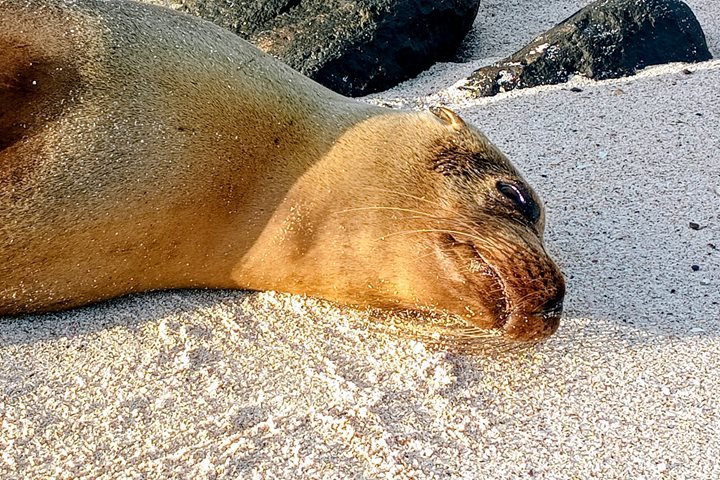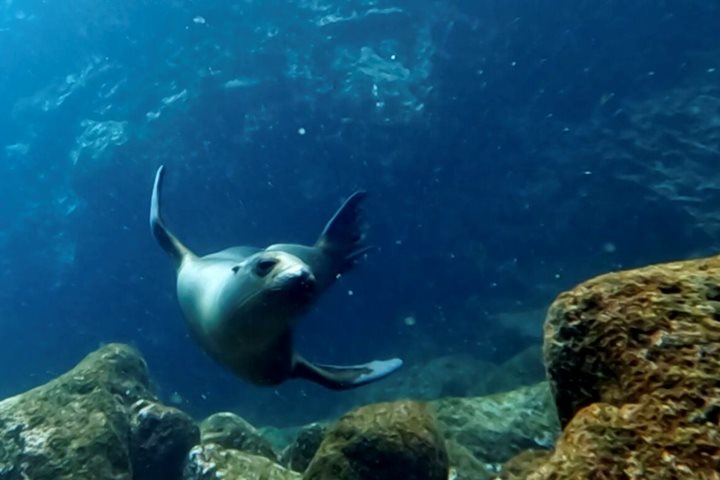Today, guests enjoyed observing countless sea turtles while kayaking at Gardner Bay on Española Island. After breakfast, some of us went snorkeling, and we found sea lions, turtles, and plenty of colorful fish. Others opted for a relaxed morning stroll on Gardner Beach, one of the most spectacular beaches on the islands. Lunch was delicious, as always. After a well-deserved nap, our guests put on their hiking shoes and boarded the Zodiac to explore the jewel of the crown: Punta Suarez. We walked along this riverbed-like trail. Sea lions and their newborns were one of the main attractions. We got to see our first waved albatross, a species that only nests on this tiny island of the archipelago. Our afternoon was full of wildlife and happiness, and it was a very emotional experience for most.
- Daily Expedition Reports
- 28 Nov 2022
Española Island, 11/28/2022, National Geographic Islander II
- Aboard the National Geographic Islander II
- Galápagos
Adriana Aguirre, Naturalist
Adriana was born in Guayaquil , the largest city in Ecuador, on the Pacific coast . When she was only a year old, her parents moved to Galapagos where her father captain ed a small bay - tour boat. She returned to the mainland to finish school, but t...
Read MoreShare Report
Galápagos Escape: An 8-Day Voyage
VIEW ITINERARYRelated Reports
6/23/2025
Read
National Geographic Islander II
Española Island
Today we visited Española Island, the southernmost—and one of the most spectacular—of all the Galápagos Islands. Known for its unique wildlife and dramatic landscapes, Española offered us a day full of unforgettable encounters. In the morning, we landed at Gardner Bay, where a long stretch of white coral sand welcomed us. Galápagos sea lions lounged along the shore, completely unfazed by our presence. Offshore, we snorkeled in the clear waters among colorful reef fish and Pacific green sea turtles. Playful sea lions swirled around us like underwater acrobats. In the afternoon, we explored Punta Suárez, one of the best wildlife viewing sites in the entire archipelago. The trail led us through colonies of Nazca boobies and blue-footed boobies, some engaged in nesting or courtship dances. We also witnessed waved albatrosses, many sitting on eggs or gliding in the wind above the cliffs. The highlight for many was watching a pair of albatrosses perform their elaborate, synchronized courtship ritual, full of beak clacking and head swaying. As we approached the cliff’s edge, we were treated to the dramatic sight of waves crashing against the rocks and the famous blowhole, which sent bursts of water high into the air. With seabirds soaring overhead and marine iguanas sunbathing in every direction, the magic of Española was on full display.
6/22/2025
Read
National Geographic Islander II
Floreana Island
Today the guests of National Geographic Islander II had a chance to snorkel at Champion Islet, just off Floreana Island. It was a breathtaking expedition to one of the most vibrant marine ecosystems in the Galapagos. As soon as we slipped into the water, we were greeted by schools of colorful fish and playful Galapagos sea lions.







